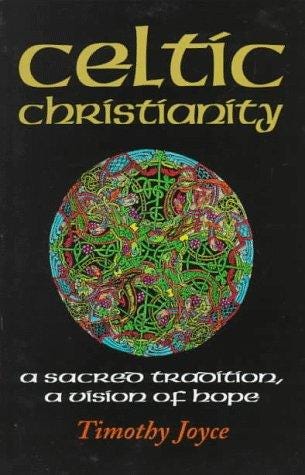
In Celtic Christianity: a Sacred Tradition, a Vision of Hope (1998), Fr. Timothy Joyce, OSB offers a brief historical survey of Celtic spirituality, beginning with its pre-Christian roots and continuing to the present day. He discusses the emergence of distinctive practices within Insular Christianity in the early medieval period (which have been misleadingly called the “Celtic Church”), succeeding centuries of external influence and domination, and modern challenges. He focuses mainly but not exclusively on Ireland. On the basis of this history, he takes up the question of whether a distinct Celtic spirituality has survived, and what it has to offer to contemporary people. (5.5" x 8.5", 180 pp.)
For those who don't know this history and want something deeper than a Wikipedia article, but don't want to tackle a lengthy scholarly tome, Joyce covers a lot of ground in a short book and includes the most important developments. For those who do have some knowledge of this history, Joyce offers interesting points to ponder about the relationship between historical episodes (including the Cromwellian invasion, the Penal Laws, and the Great Hunger) and religious developments in Ireland and the Irish diaspora. His arguments are suggestive rather than conclusive, as they must be given the shortness of the book, but they are thought provoking, and the notes and bibliography point the way to further reading for those who want more depth.
Similarly, In his treatment of Celtic theologians of the early medieval period, including Pelagius and John Scotus Eriugena, Joyce makes some tantalizing remarks about the differences between their worldview and that of St. Augustine and St. Jerome, and suggests that in some ways, the Celtic theologians were closer to Eastern Christians, emphasizing the graciousness of God and Creation, rather than the fallenness of humanity and nature.
Joyce devotes a whole chapter to Celtic monasticism, which is warranted given that early Celtic Christianity was organized around abbeys rather than bishoprics. As a monk himself, he has insights into this topic that another scholar might not.
For the most part, Joyce avoids romanticizing his subject matter, but he does slip up occasionally, as when he overstates the egalitarianism of ancient Celtic society concerning class and gender.
Joyce touches on several themes that other writers on Celtic spirituality have written about, such as the Celts' esteem for verbal and artistic expression, their mysticism, their belief in the proximity of the other world, their love of nature, and their openness to voyages beyond the horizon. The imaginative Celtic worldview was suppressed during centuries of persecution in the Celtic homelands and rigid reaction and conformism in the wider post-Reformation Catholic Church, but it did not disappear completely. As Celtic peoples began to recover their cultural heritage, and as the Church began to open up after Vatican 2, there has been a renaissance of Celtic spirituality. Joyce argues that Celtic Christianity is "a rich ... tradition that has much to offer to offer us today." (145)
A version of this review originally appeared on Reddit on r/CelticSpirituality.


